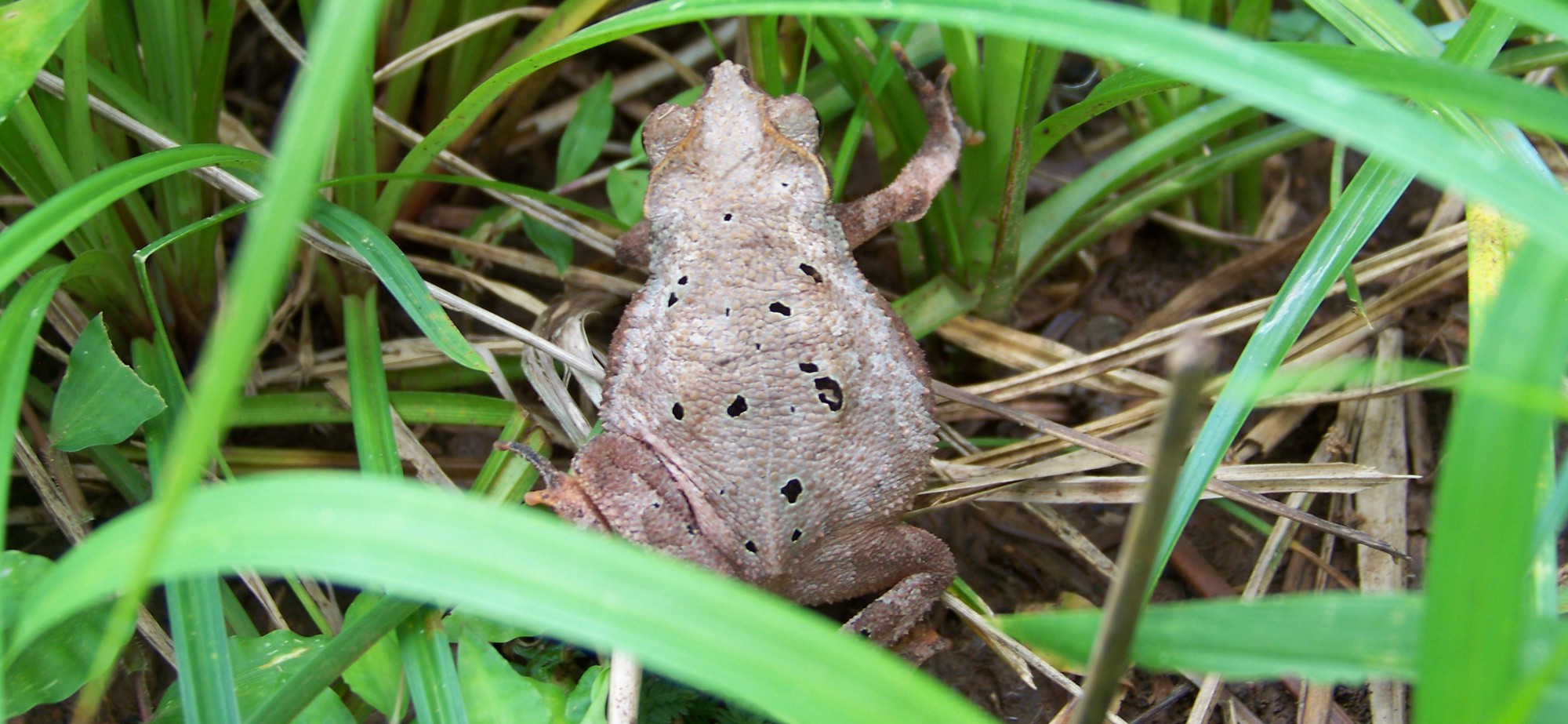For some reason, I’ve taken to collecting pictures of the graves of writers I admire; it started, somewhat accidently, during a conference in Baltimore when I happened to learn from a brochure in the hotel that Poe was buried in the city. Now I’m not particularly goth or anything, but I DO love a good graveyard. In a lot of American cities they’re often the best kept green spaces – there was a gorgeous one in Bozeman MT high up on a ridge overlooking the town with some very nice junipers and cedars, a very peaceful quiet place good for strolling around. So visiting them is often a lot of fun, but in this case it was particularly necessary, because of course I love Poe – he’s probably one of the top three most important American writers, I’d say, right up there with Melville and Twain in terms of artistry and influence. So of course I took some time to go hunt up ol’ Edgar, and found that he had TWO markers in Baltimore, one for his original burial site and a larger, more lavish monument a few yards away, put up in 1875 as his reputation grew posthumously.

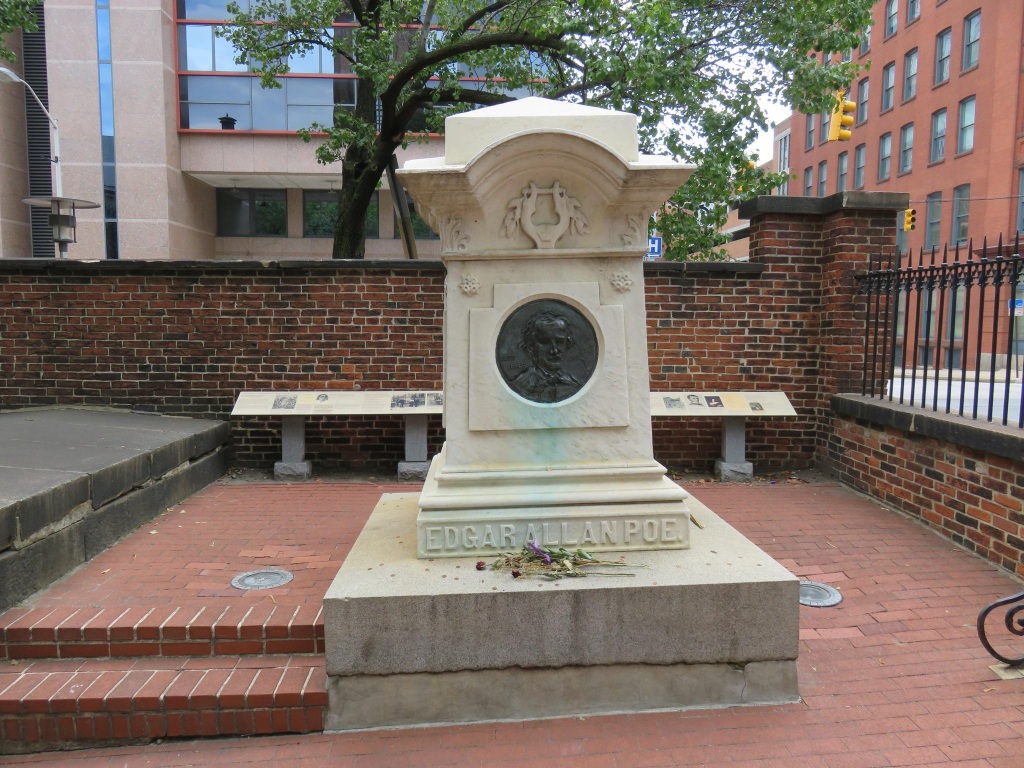
As you can see, it’s not a particularly pretty graveyard. It’s cramped and not at all green, in a smallish churchyard surrounded by the rest of the city, but still, it was fun to see the final resting place of a writer whose work is so important to me.
Now, at the time, it was just kind of a one off – I didn’t have any plans to starts accumulating dead writers’ graves or anything. Just had happened to find Poe there, and that was plenty. But here in early June I went to Berlin, and as I was looking around for stuff to do, I discovered that there’re a lot of famous dead writers planted in the city. And some of them were, like Poe, enormously important to me and my reading! So I took some time to hunt ’em up and get some pictures, and I thought I’d share em here.
First stop on the list was the Dorotheenstadt Cemetery, a one-stop shop for dead famous writers, as well as other prominent Germans of a certain era. It’s a nice cemetery, very pretty with good trees, a lot of sculpture, and nice quiet little paths, right in the middle of the bustling Mitte neighborhood. It’s a storied cemetery that became, for a variety of reasons, the final resting place of a lot of intellectuals, so I spent a fair amount of time there, just strolling around and bathing in all the Germanic mono no aware of the place.
The grave I was most interested in seeing was Brecht’s, of course; Threepenny Opera, Life of Galileo, his Turandot…c’mon, ol’ Bert was one of the greatest playwrights of the 20th century. He’s also a tragic figure, fleeing the Nazis only to get HUAC’d in the states, and then returning to East Berlin only to face the crushing disillusionment of Stalinist purges and oppression. But at least his grave is a peaceful spot – I’d say it’s the best in the whole cemetery, a long green plot with beautiful rough granite markers for his wife Helene and himself.
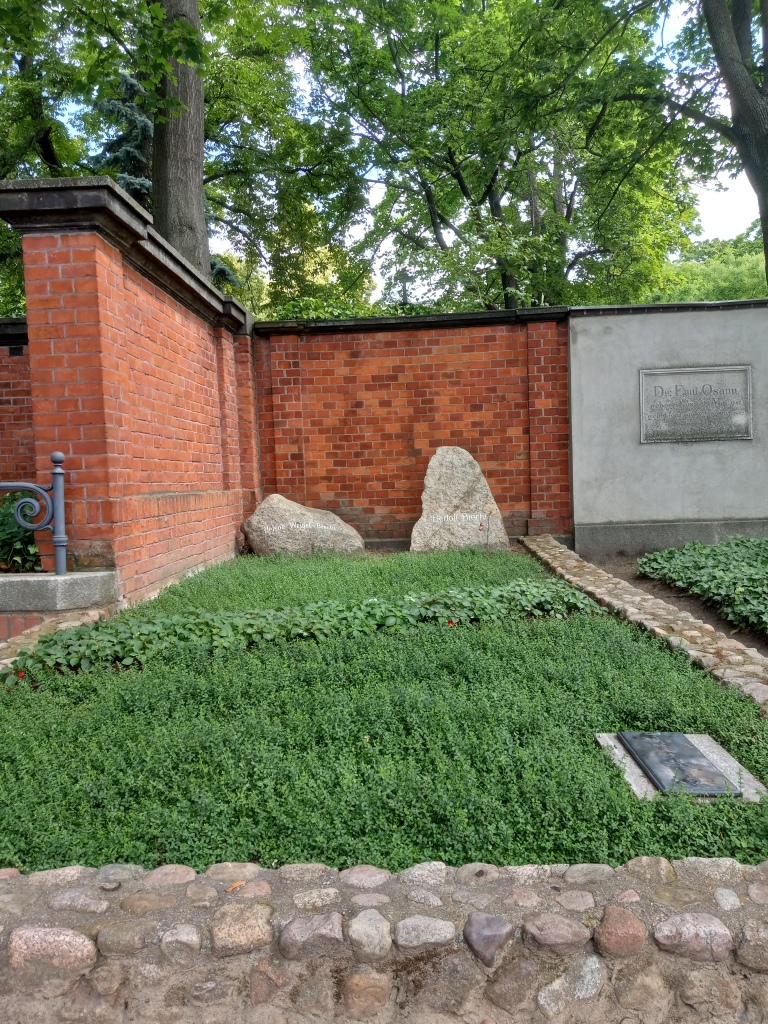
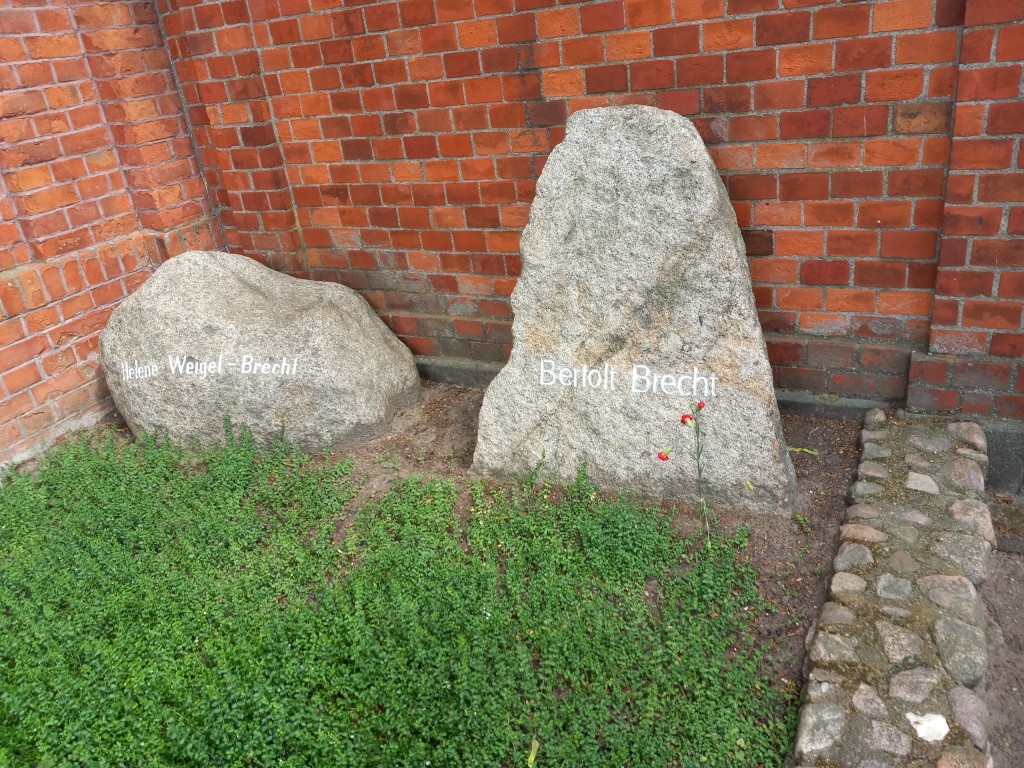
Paying my respects to Bert, I strolled along the wall and was surprised to run into ol’ Heinrich Mann, brother of Thomas. I’ll always have a soft spot for Heinrich who, despite never receiving the accolades or wealth of his more famous nobel laureate brother, DID have better and more consistent politics. He was a staunch internationalist and anti-war socialist as well a helluva writer, and I’ve always loved his Small Town Tyrant (the novel Dietrich’s “The Blue Angel” was based on); it’s way better and more interesting than Thomas’s The Magic Mountain, in my humblest of opinions. Nice marker with a dignified bust:
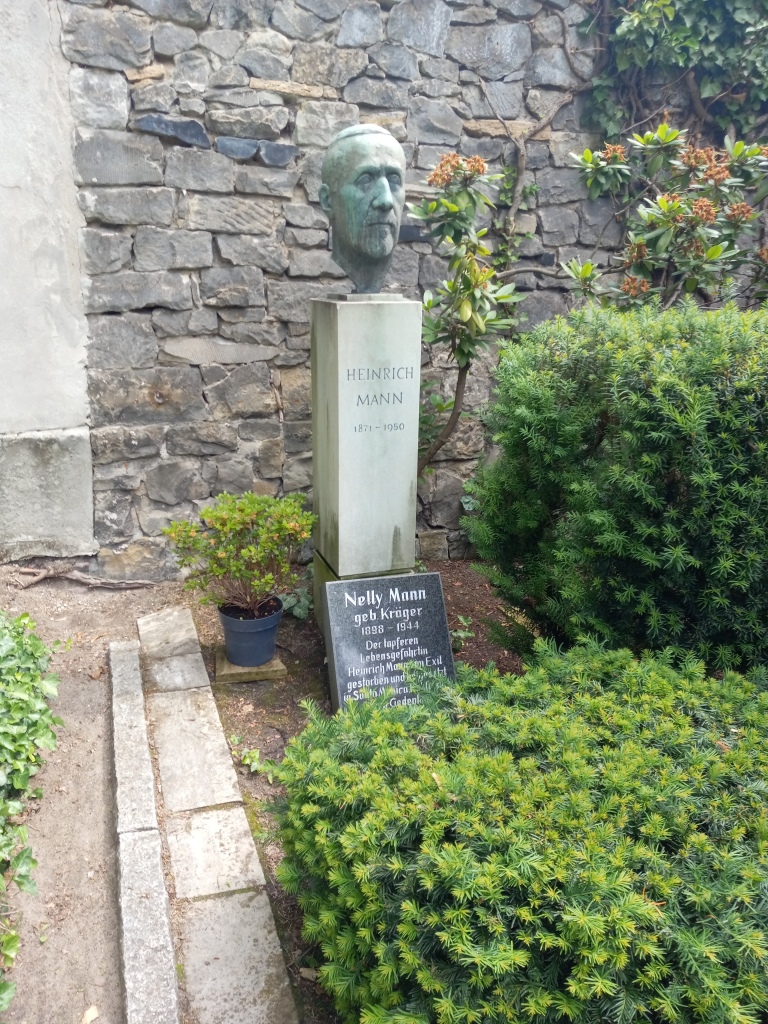
Continuing my tour, I next found the austere marker of writer and Stasi informant Christa Wolf (and her husband). She’s an important East German writer who has recently sort of come back into vogue; if you’re unfamiliar with her work, I’d strongly recommend her novel Cassandra, about the Prophetess and the Trojan War, and the collection What Remains and Other Stories.
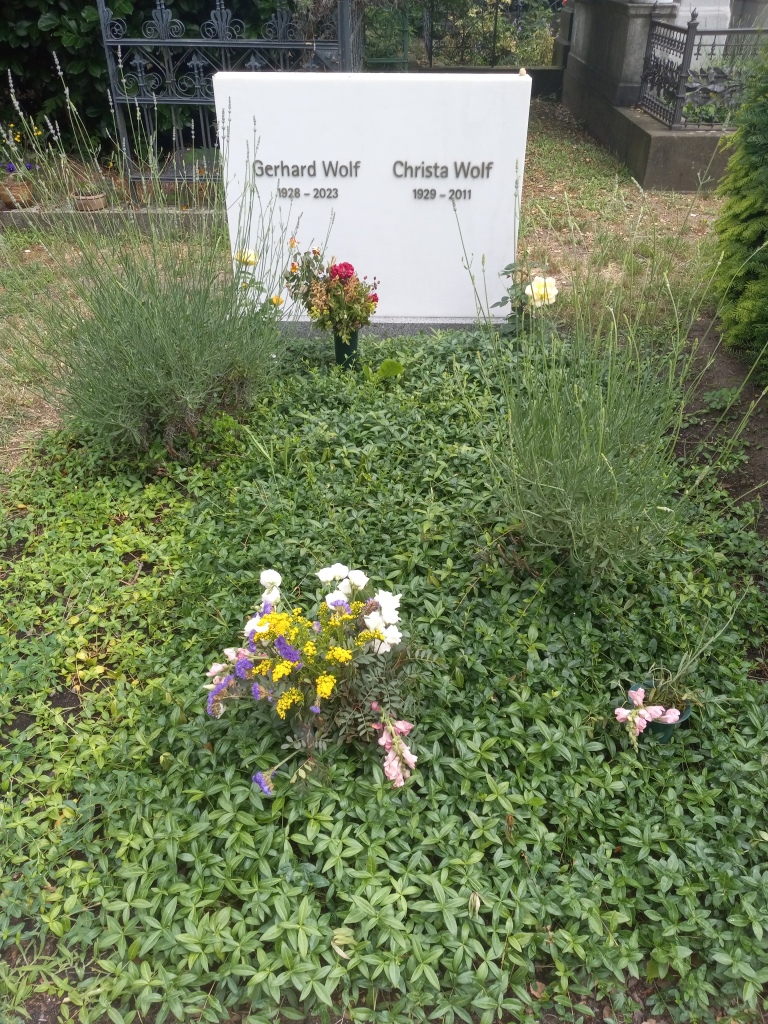
Next up on the hit parade is Anna Seghers, author of one of my favorite novels of all time, Transit. She was one of the big names in German diasporic literature during Nazi times, and her work is intimately interested in how people survive under the cruel oppression of dictatorships. She was writing about Nazi concentration camps in the late 30s, one of the first to introduce the horrors of fascism to the wider public. She’s a great writer, and I had no idea she was here in Dorotheenstadt.

And just to wrap up Dorotheenstadt, ol’ Herbert Marcuse and Hegel are there too. Hegel’s grave was by far the most visited while I was there – a number of wan young nerds swanned in to take a picture of his marker while I was strolling around, and there were by far the most number of memorial pebbles left on his grave. A sign of our disordered times, no doubt.

In contrast, Marcuse’s grave was both smaller and tucked away in a crowded corner. It had better plants, though, and a few folks had left a pebble or two there. The weird cursive used for his name reminds me of divorcee wine bars (I swear I’ve seen a “It’s Wine o’clock Somewhere!” sign in the same font), but I do like the engraved “weitermachen” (“keep going”) on the upper part of his marker.
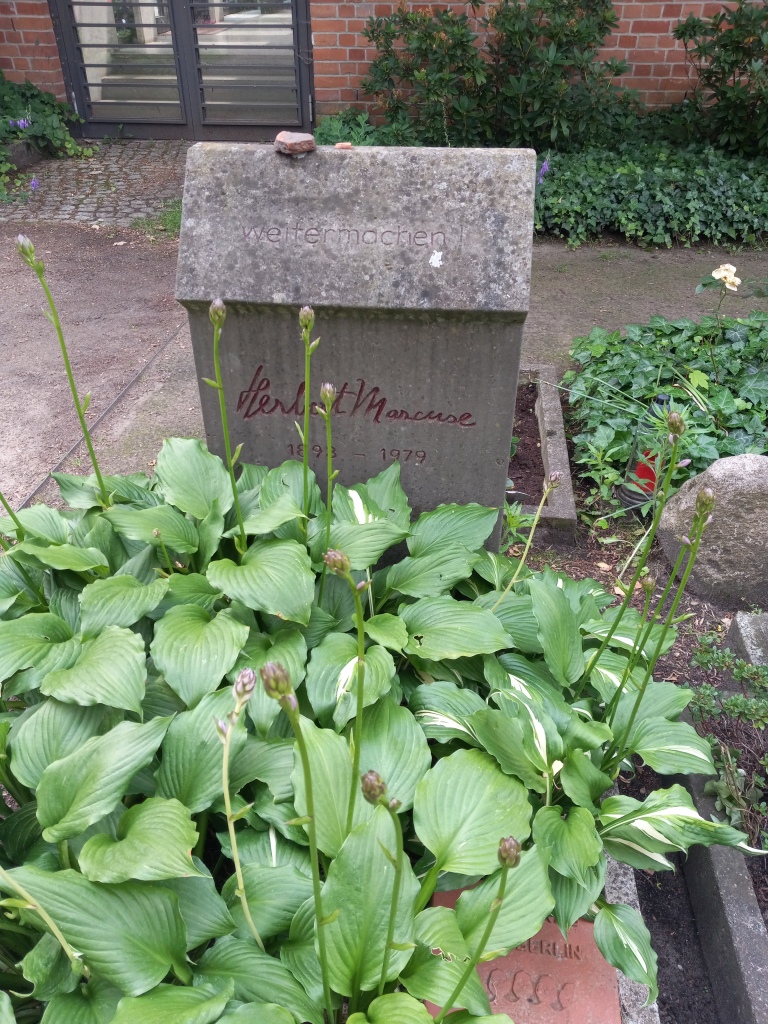
Thus ended the first day of my morbid picture-takin’ adventure. Later during the trip, I went down to the Wannsee, a cute little lakeside district full of weird German yachting clubs and rowing organizations, a center of internal tourism for the region. It’s a pretty spot!

But, of course, I was there for one reason – Heinrich von Kleist.
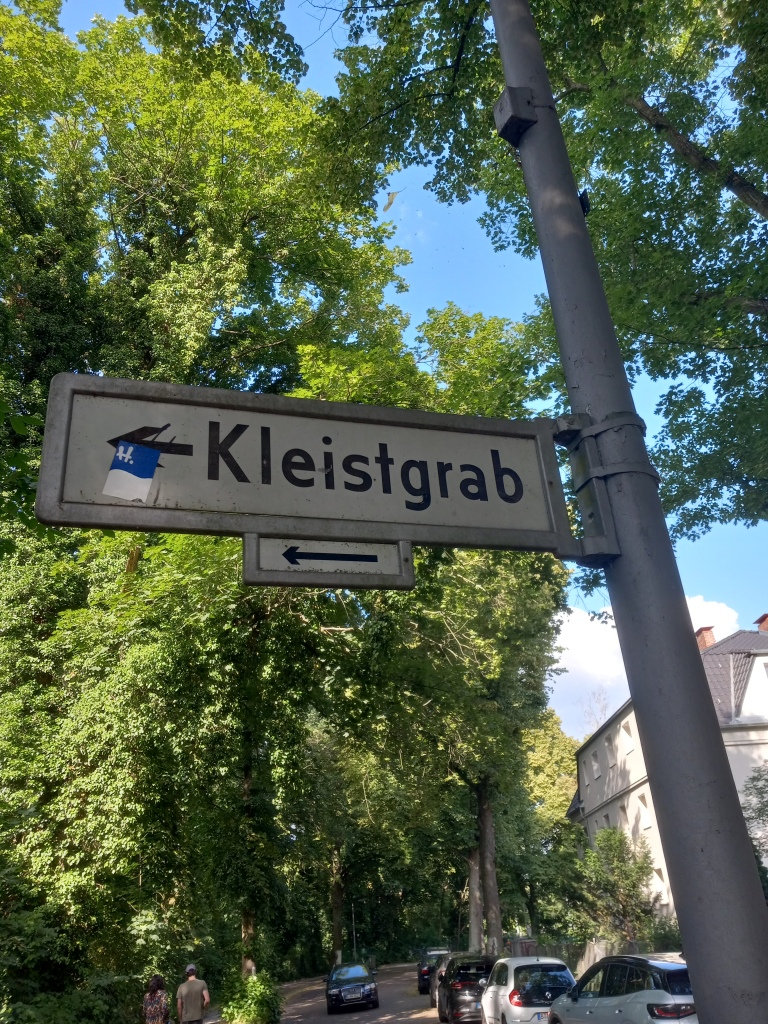
Kleist is one of my favorite writers, broadly defined as a Romantic although, like all labels, that one fails to capture the wild, wide-ranging, and often truly weird sensibilities that you find his work. There’s a real furious imagination in his writing, underscored by a biting and hilarious absurdity; if you haven’t had a chance, you should really read him! Michael Kohlhaas and The Marquis of O are incredible and vital, and there’s an excellent recent edition of his shorter works translated by Matthew Spencer (published by Sublunary Press) that I highly recommend (buy it here immediately).
As is all too common, though, poor ol’ Kleist had a rough time of it – money and artistic woes dogged him through his life, and he came to a tragic end with a murder-suicide pact on the shore of the Wannsee in 1811, shooting his friend Henriette Vogel, a woman suffering from terminal cancer, before turning the gun on himself. Now there’s a nice little park with a lot of informational signage there, as well as a marker for the two of them, at the spot near where their bodies were found.

It’s a nice, peaceful little spot, lots of maples and oaks, but the (appropriately) funny/weird bit is that it’s right between these big rowing club buildings. When we were there, some kind of party was going on, with kids out rowing and rave music thumping, a very funny scene in which to contemplate Kleist and his life. Also got to watch a fox hunt some voles in the thickets nearby, so that was fun.
My third and final graveside pilgrimage was a big one. Travelling to the Kruezberg kiez in Berlin, I tromped around the Kirchhof Jerusalem und Neue Kirche III, a large and very attractive cemetery full of trees and extremely cute European squirrels (those red ones with the tufty ears) until I found the grave of E.T.A. Hoffmann (under his real name of E.T.W. Hoffmann – he changed his name from Wilhelm to Amadeus out of admiration for Mozart.

Hoffmann is a special writer for me, one of my own personal favorites whose work I absolutely and unabashedly love. Full of imagination and weirdness and hilarity, he’s one of the rare true geniuses of literature, in my opinion; he wrote in the late 18th and early 19th century, but like so many things from that (and earlier) eras of literature, there’s a shocking and striking “modernity” to his work. For instance, take The Life and Opinions of The Tomcat Murr, a hilarious and fantastic novel that purports to be the autobiography of a cat written on the backs of the pages of his owner’s own autobiography – that means that the way it’s printed, you cut from one narrative to the other, right in the middle of a sentence, moving from Murr’s hilarious musings to the soppy life of Hoffmann’s heightened alter-ego, the sentimental knucklehead Johannes Kreisler. It’s the sort of thing that, published now, would be heralded as a postmodern masterpiece of avant-garde experimental literature…but it was written in the early 1800s. Kinda puts things into perspective, you know?
His short stories are equally wonderful, and often verge into what we would today call Weird Fiction. You’ll find automata, gruesome murder, weird morbidity, and occultism in a lot of his stories, as well as some really insightful character studies and city descriptions (particularly of Berlin and Dresden and Nuremberg). He’s just a delightful writer, an absolutely essential artist in my opinion. It was a treat to visit his gravesite, though I wish I’d brought a beer with me to give him a proper salute.
Writing this up and enumerating the graves I’ve visited, I have to ask myself why I enjoy doing these things. I don’t feel any particularly strong emotions when I’m visiting these markers, even when the circumstances of their deaths, like in Kleist’s case, are objectively tragic. Nor do I experience any kind of numinous awe – that’s reserved for their work. Maybe that’s what I find interesting, the contrast between their work, which lives inside the reader, and the kind of underwhelming final punctuation mark of their physical graves? Getting to know someone through their writing, reading and rereading their work and learning about their lives, you already have a kind of memorial to them built up in yourself, so their grave’s don’t add anything “new” to that. But then, maybe it’s just kind of nice to see their graves and be reminded of their work, which gives so much pleasure still? Or maybe the impulse to visit their graves is no different from the impulse to put their books up on the shelf? A collector and completist’s natural inclination? I dunno.
Regardless, it’s certainly something I’ll probably keep doing. I’m going to Providence Rhode Island in August for a Lovecraft/weird fic convention, and you KNOW I’m going to visit the Old Gent’s grave. But who else would I like to see? Paris would yield a bumper crop – Wilde, Huysmans, Lautreamont, Maupassant, Hugo, Balzac. Prague for Kafka of course. Hard to envision it, but Lafcadio Hearn in Tokyo would be special. In the states there’s PKD, Ellison, Butler, Le Guin. When I went up to Cross Plains TX, I didn’t know that ol’ Robert E. Howard was actually buried in Brownwood, about 40 miles south, so that’s one I’ll have to collect one of these days.
Anyway, tempus fugit and all that. Life is short; read something fun!
